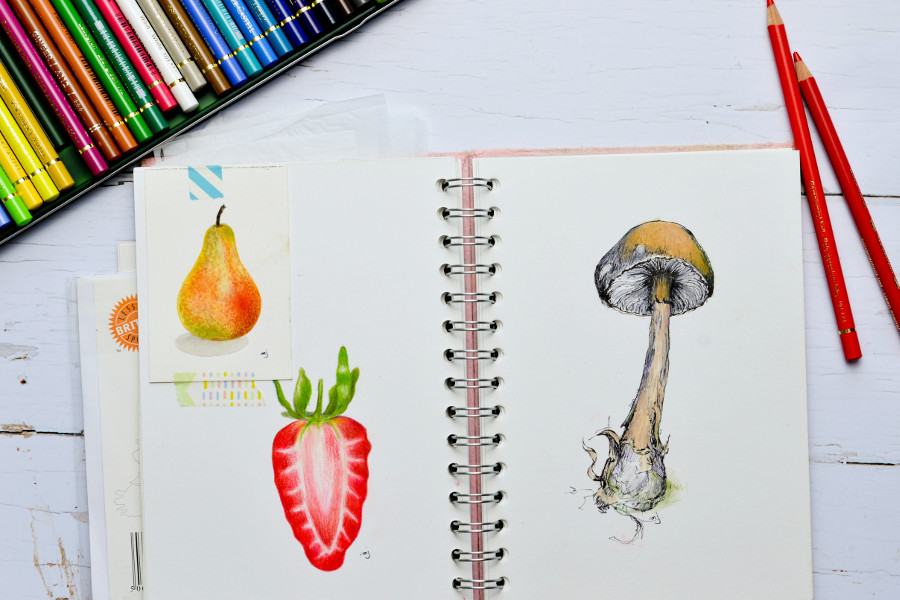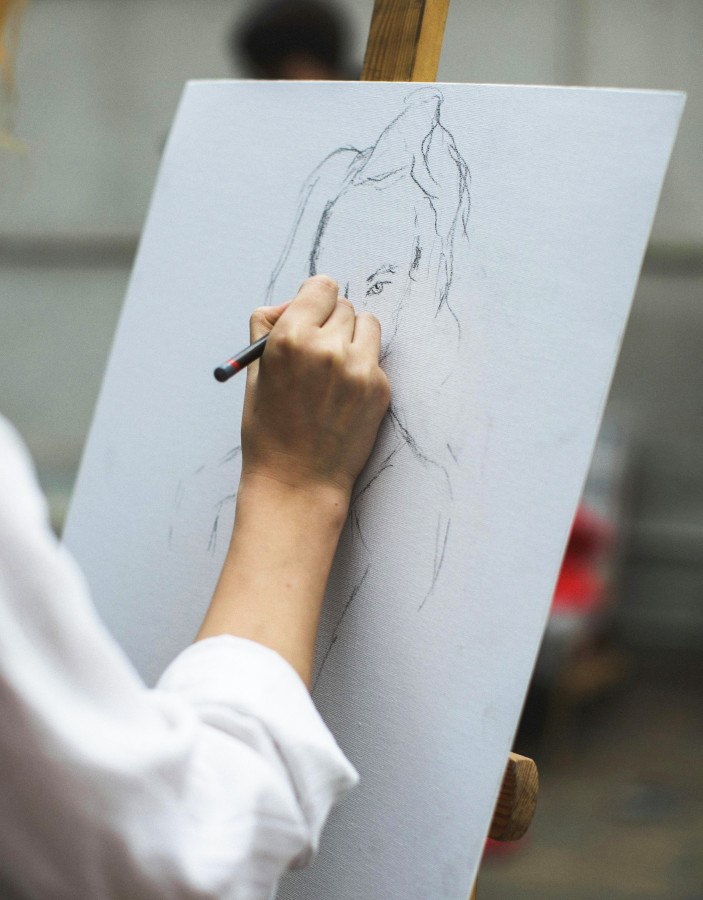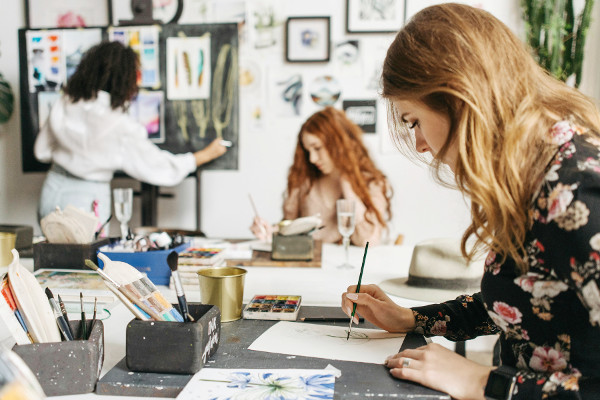How to Learn to Draw Through Joining a Drawing Class for Beginners - Essential Tips
As kids we were encouraged to explore our creativity and artistic vein through a number of avenues. One of them was drawing. But as the years went on many of us quit these pursuit. Luckily, it's never too late to take up drawing again for maximum joy while also enhancing your skills. A simple way to learn how to draw is in the form of taking a class. This can be held both online and offline. From this article you will find out what you need to know before you join one. Get ready to dive into the world of art, express yourself, and develop your unique style in a fun, supportive environment.

What will I learn in a drawing class?
Taking a drawing class is like unlocking a door to a world of creativity. You’ll start with the basics – sketching simple shapes and lines – and slowly begin to build up your skills, learning how to capture depth, light, and shadow. As you progress, you’ll dive into more advanced techniques like shading, perspective, and proportion, allowing you to bring your drawings to life. Some classes even introduce you to different styles and materials, helping you find your artistic voice. It’s an opportunity to develop both your technical abilities and your own unique artistic flair.
Are these courses suitable for beginners?
Absolutely! These classes are designed to help you ease into the world of art, guiding you step by step through the fundamentals. You’ll start with simple exercises that build confidence and gradually move into more complex techniques as your skills grow. No previous experience is required – only a willingness to learn and explore. Many beginners find these classes not only rewarding but also incredibly fun as they gain new skills and begin to see improvement with every session.

What supplies do I need for a drawing class?
The beauty of drawing is that it doesn’t take much to get started. For most classes, all you’ll need is a good set of pencils ranging from light (H) to dark (B), a quality eraser (a kneaded one is a must!), and a sketchbook to capture your progress. Some classes might also introduce you to charcoal, ink, or colored pencils, so be sure to check in advance. But in the end, drawing is more about practice and technique than expensive supplies. With just a few basic tools, you’re all set to start your creative journey.
How long is a typical drawing class?
Drawing classes usually last about 1 to 2 hours, giving you enough time to immerse yourself in the process while still keeping it manageable. If it’s a workshop or a special event, it could stretch to several hours, but the majority of classes strike a balance between giving you enough time to learn and practice without overwhelming you. If you’re taking a series of lessons, they often meet weekly, allowing you time to practice on your own in between. No matter the duration, the goal is to make each class meaningful without feeling rushed.
Can I take a course online?
You definitely can! One of the benefits of digital learning is that you can explore your artistic side from the comfort of your home. Online classes offer everything from pre-recorded lessons to live sessions, where you can interact with instructors and peers. They often come with downloadable resources to guide you through each lesson at your own pace. Whether you’re just starting out or looking to refine your skills, online drawing courses provide the flexibility to learn whenever and wherever suits you best. Those who seek free options can check out tutorial videos on Youtube. Many artists offer extra tools and materials to those students who buy a type of membership, usually through the service provider Patreon. This is a cheap option, memberships normally start from 5 - 10 bucks per month. Considering the effort these artists put into creating their tutorial videos, especially free ones, it's a nice way to give back and support that artist.
How much do drawing classes cost?
The cost of drawing classes can vary depending on where you take them, but on average, you might expect to pay anywhere from $15 to $50 per session for group classes. If you’re going for a one-on-one lesson with a professional artist, the price can go up. Online classes can range from affordable options (sometimes as low as $20) to more comprehensive programs that cost over $100. As mentioned previously, you can learn from free resources online and pay only a couple of dollars to support the artist. On the other end of the spectrum you can find "on location" courses, where the participants travel to a seaside spot for a week, or to a gorgeous place like Tuscany and Provance. These courses are quite expensive and targeted at more advanced students with larger pockets. In short, do some research and find a class that fits both your budget and your learning goals. Remember, the value lies in the skills you gain!
What is the best type of drawing class for beginners?
For beginners, it’s best to go for a class that starts with the basics. Look for a course that focuses on core skills like line drawing, shading, and basic shapes. These classes provide a solid foundation to build upon and don’t overwhelm you with too much information all at once. Classes that break down each technique in a simple, step-by-step manner are especially helpful. As you progress, you can branch out into more specialized classes, but the most important thing is to build your confidence and skills before diving into more complex techniques.
How do I improve my drawing skills?
Improving your drawing skills is all about consistent practice. The more you draw, the better you get. Start with simple exercises like sketching basic shapes and gradually move on to more complicated subjects, such as people, animals, and landscapes. It’s also helpful to draw from life or reference photos to strengthen your observational skills. Don’t forget to challenge yourself! Try different materials, techniques, and styles to expand your creative horizons. And most importantly, be patient with yourself – mprovement comes with time, and every drawing you create is a step forward.
Here are a couple of online sites that help you to improve your skills: r/learntodraw subreddit on Reddit, DeviantArt forum, different Youtube channels, Drawspace, and of course the big online course platforms, such as Coursera, Udemy, Skillshare.

What are the benefits of taking a drawing class?
Taking a drawing class offers much more than just learning to sketch. It’s a chance to tap into your creative side, relieve stress, and express yourself in new ways. Drawing helps improve focus and attention to detail, and it’s also a fantastic way to boost your confidence. In a class, you’ll receive feedback that helps you grow, and the structure can push you to explore techniques you might not try on your own. Plus, being part of a community of artists fosters motivation and inspiration, which can fuel your own artistic journey. It will also bring you together with like-minded people who share your interest. This can lead to the birth of lifelong friendships.
Do I need prior experience to take a drawing class?
No prior experience is needed! Drawing classes are made for everyone, whether you’re picking up a pencil for the first time or revisiting a long-lost passion. Beginner classes break everything down from the very beginning, focusing on core techniques like sketching and shading. No matter your skill level, you’ll learn the fundamentals and have a chance to grow at your own pace. The best part is that drawing is all about personal expression, so everyone can improve their skills in their own way, no matter where they start.
What techniques will I learn in a drawing class?
In a drawing class, you’ll be introduced to a variety of techniques that will help you create more dynamic and lifelike art. You’ll learn basic skills like shading, hatching, and cross-hatching, which allow you to bring depth to your drawings. As you progress, you’ll dive into perspective, which is key to drawing realistic landscapes and figures. Other techniques include contour drawing, where you focus on the outline of objects, and gesture drawing, which helps capture motion. Whether you're using pencils, charcoal, or ink, these techniques will give you the tools to enhance your drawings and explore different artistic styles.
Can I take a drawing class if I’m not very good at drawing?
Of course! Everyone starts somewhere, and a drawing class is the perfect place to grow, even if you don’t feel "good" at drawing yet. Classes are designed to guide you through each step, helping you understand the fundamentals before moving on to more challenging techniques. You’ll be encouraged to explore and experiment, and over time, you’ll see yourself improving. Drawing is as much about developing your confidence as it is about developing your skills, and the more you practice, the better you’ll get. No judgment, just a space to learn and grow.
How do I find a drawing class near me?
Finding a drawing class near you can be as simple as a quick online search or asking around at local community centers or art schools. Many cities have art institutes that offer classes for all skill levels. You can also check out platforms like Eventbrite or Meetup, where local art events are often listed. If you’re looking for something more informal, local coffee shops, libraries, or bookstores might host drawing workshops or informal art gatherings. Once you find a few options, read reviews and check out class schedules to see what fits best with your needs.
Are there drawing classes for kids?
Yes, there are plenty of drawing classes designed specifically for kids! These classes are usually focused on making art fun while introducing children to the basics of drawing. They help kids develop fine motor skills, creativity, and an appreciation for art. Kids’ classes often focus on simple shapes, colors, and textures, while fostering a sense of self-expression and confidence. Some classes even teach fun techniques like cartooning or character design, making it easy for children to engage with art in a way that feels exciting and approachable.
What should I wear to a drawing class?
When heading to a drawing class, comfort is key. You’ll want to wear something that allows you to move freely, especially if you plan on spending hours working on your art. Keep in mind that drawing materials can sometimes get messy – charcoal and graphite in particular can smudge – so it’s a good idea to wear clothes you don’t mind getting a little dirty. An old shirt or apron can help protect your clothes. Ultimately, just wear something that lets you focus on your art without worrying about your outfit. After all, the more relaxed you are, the more you’ll enjoy creating!



